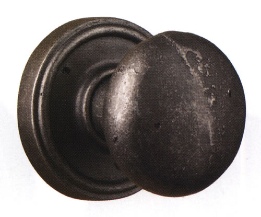| one sees -- the traditional aesthetic consideration of most museums -- and more to do with what one feels, or more particularly, how one is made to feel. Frank Oppenheimer says that little children never seem to cry at the Exploratorium. He once saw a kid crying but later found out that the tears were because the boy's parents were making him go home! Oppenheimer believes that a place like the Exploratorium effects the way people live and work and how they think about not only science and art, but about technology and about themselves. | battery dry cells. It's really unpleasant to try and get a battery out of a little two pack. You have to cut it with a knife and then pull a tab up and it makes a crinkly and awful sort of noise." How on earth else might batteries come? "Loose!" shouted Dr. Oppenheimer, "And frankfurters too. I don't like them packaged. They are all sort of shrunk together that way." "And vacuum cleaners. They are hard to steer and they make that god-awful racket. It's because nobody cared what it is like to run one. I'm sure it's not the economics of it. It's just that nobody paid any attention to the feel of it or what it was doing to other people." Are you saying that there is a need for paying more attention to "what feels good" on a broad scale -- that not only vacuum cleaner manufacturers, but museum administrators and society in general have all lost sight of aesthetics in their decision making ? "One of the things that has puzzled me is how to involve aesthetic decision making in more of what society does. It isn't like science. You can't go and ask an expert, 'Will this work or won't it work?' Congress can't say, 'Well, we can't make up our minds, to let's go to the National Gallery and look around for a while and come back.' It doesn't work that way. The only way I think it can work for vacuum cleaner people, for museums, for society as a whole, is for aesthetic decision making to be part of everybody's experience from youth onward." "That means that toys have to be made well. That means that when children like or dislike something they eat, that their parents should pay attention to it. Aesthetics involves both the notion of cultivating taste and the business of building up tension and then providing release of tension. This should be incorporated into the experiences of young children so that it becomes an integral part of their thinking. Eventually you will have an adult population for whom aesthetics have become the basis of decision making, not an afterthought. When people say that they need more art in their city, | ||
 | |||
When I asked Dr. Oppenheimer how the Exploratorium does this, he began by giving me a Zen-like answer, "If you are designing a doorknob, there are a variety of ways of doing it. It may actually be better to make a doorknob square. But they feel nicer, those big heavy round doorknobs. They're really lovely. So we use them." "Think about how a car door sounds when it slams," he continued. "Manufacturers found out that they could sell cars better if they made a car door that sounds solid, even if it's made out of tin. That is aesthetics at the expense of substance of course." "Now let me give you an example of something that doesn't feel good. It's just plain aggravating the way food comes packaged. Or | |||